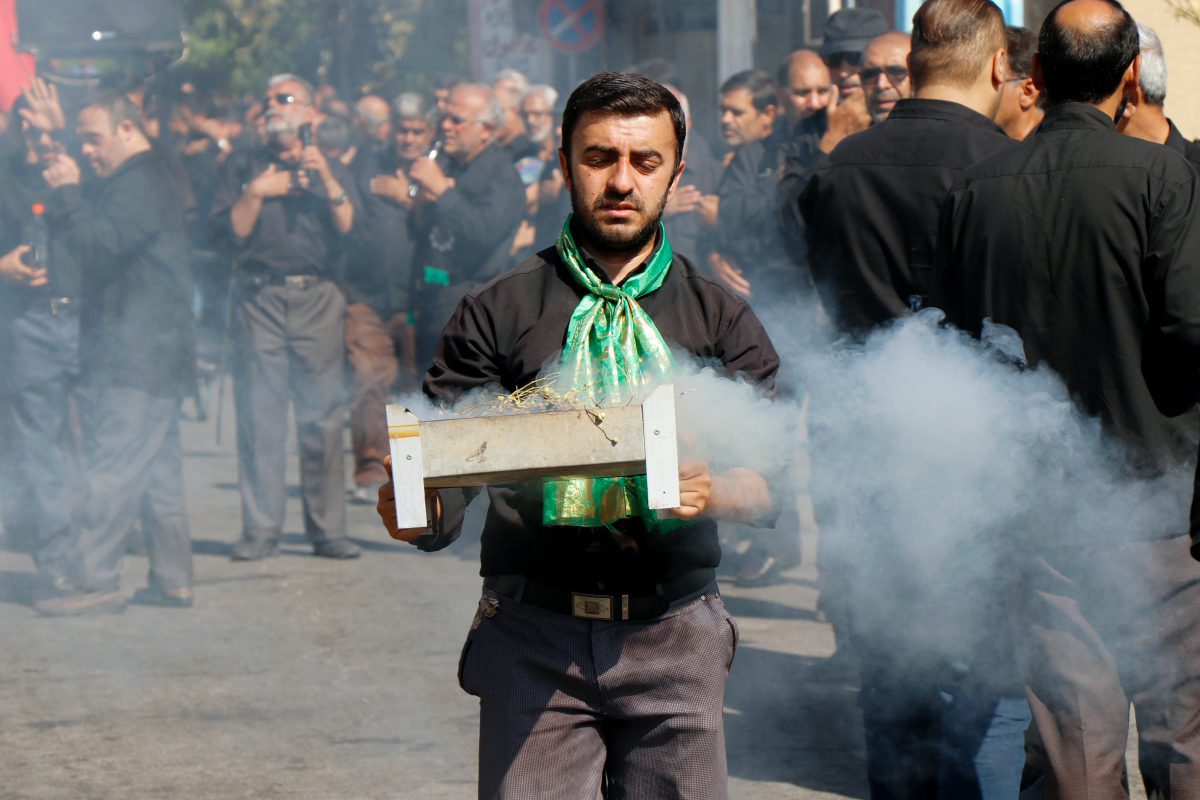Table of Contents
Visiting Iran during Muharram can be a truly extraordinary experience, as there are significant events held during these days. Immerse yourself in the profound spiritual journey of Muharram and Ashura in Iran with our comprehensive guide.
This article provides an in-depth exploration of the significance of Muharram, and the Day of Ashura, a day of deep mourning and reflection for Muslims worldwide. We delve into the rich tapestry of rituals, ceremonies, and traditions that mark this sacred time for Iranian Shia Muslims. From the solemnity of Tasoua and Ashura to the vibrant local customs in various Iranian cities, this guide offers a window into the heart of Iran during Muharram.
Whether you’re planning a trip or simply wish to understand more about this significant period, this guide serves as your ultimate companion to Muharram and Ashura in Iran.
What is Muharram?
Muharram is the first month of the Islamic calendar and holds much significance among Muslims. As well as being one of the four sacred months in Islam, it is a month in which many important historical Islamic events took place. The word “Muharram” is derived from the Arabic word “haram”, which means forbidden and this month is a time of worship, remembrance, and reflection for Muslims of all sects and backgrounds.
What happened in Muharram?
In Islamic tradition, Muharram is associated with the commemoration of the martyrdom of Prophet Muhammad’s grandson, Imam Hussein, who was killed in the Battle of Karbala in the year 680 CE. This tragic event is remembered by Muslims around the world, particularly by the Shia community, through various forms of mourning and commemoration.
Why is Muharram important?
Muharram is an important time for Shia Muslims to reflect on the values of sacrifice, justice, and resistance. It is a time for mourning and remembrance, but it is also a time for solidarity and community. Through various rituals and ceremonies, Shia Muslims come together to commemorate the tragedy of Karbala and to renew their commitment to the principles embodied by Imam Hussein.
During Muharram, many Iranian Shia Muslims participate in religious observances such as Tasoua and Ashura, which take place on the 9th and 10th days of the month. These days are a time for sorrow and respect for Imam Hussein, and a time for self-reflection when one commits oneself to the mourning of their third Imam completely.
What is Ashura?
Ashura, which means “Tenth” in Arabic, refers to the 10th day of Muharram. It is the most important day of mourning during Muharram because it marks the day when Imam Hussein and 72 of his followers were killed by the army of Yazid I at the Battle of Karbala. On this day, Muslims all over the world observe a day of mourning.
Ashura and Muharram in Iran
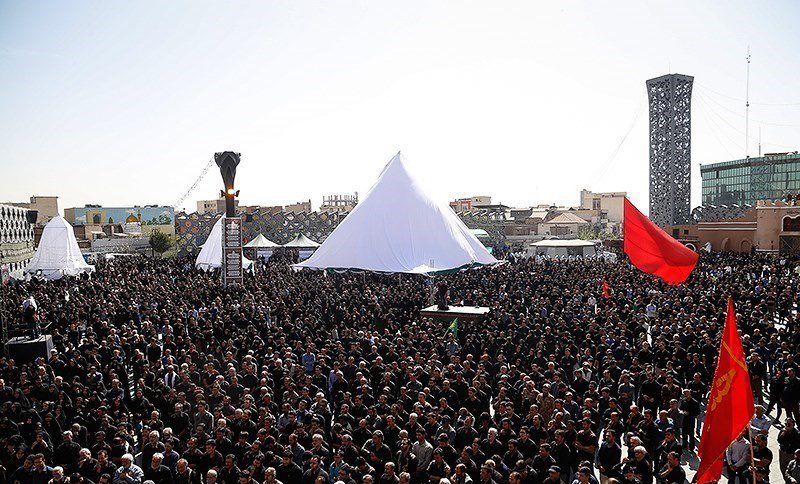
This day is of particular significance to Iranian Shia Muslims and is the most important Shia mourning. Tasoua and Ashura – the 9th and 10th day of Muharram – are national holidays in Iran and many other Muslim countries such as Iraq, Pakistan, Azerbaijan, Afghanistan, Bahrain, Lebanon, etc.
Various ceremonies are held on this day which are very significant mourning for Iranians. The rituals begin from the Ashura Morning and people gather in the main parts of the town or their own neighborhoods to hold the Ashura rituals. Iran has a vast variety of Ashura mourning rituals based on each city and ethnicity.
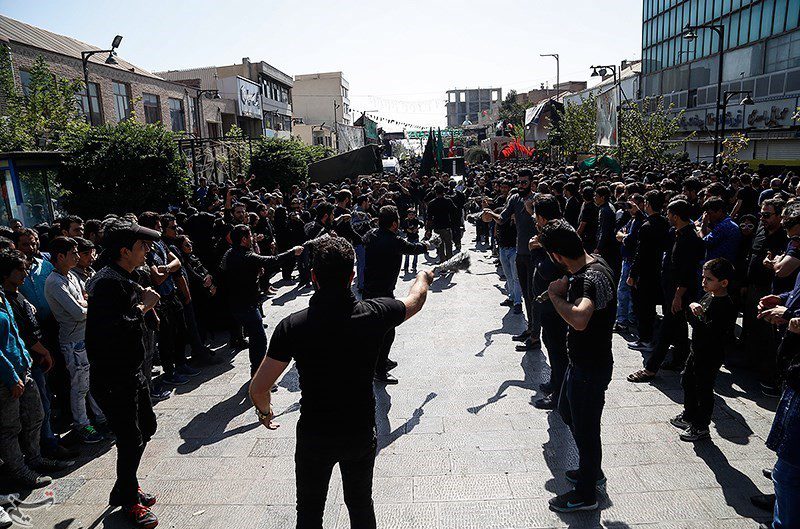
The most common form of these rituals is that many of the male participants in the procession congregate together in public for a ceremonial chest beating as a display of their devotion to Imam Hussein and in remembrance of his suffering.
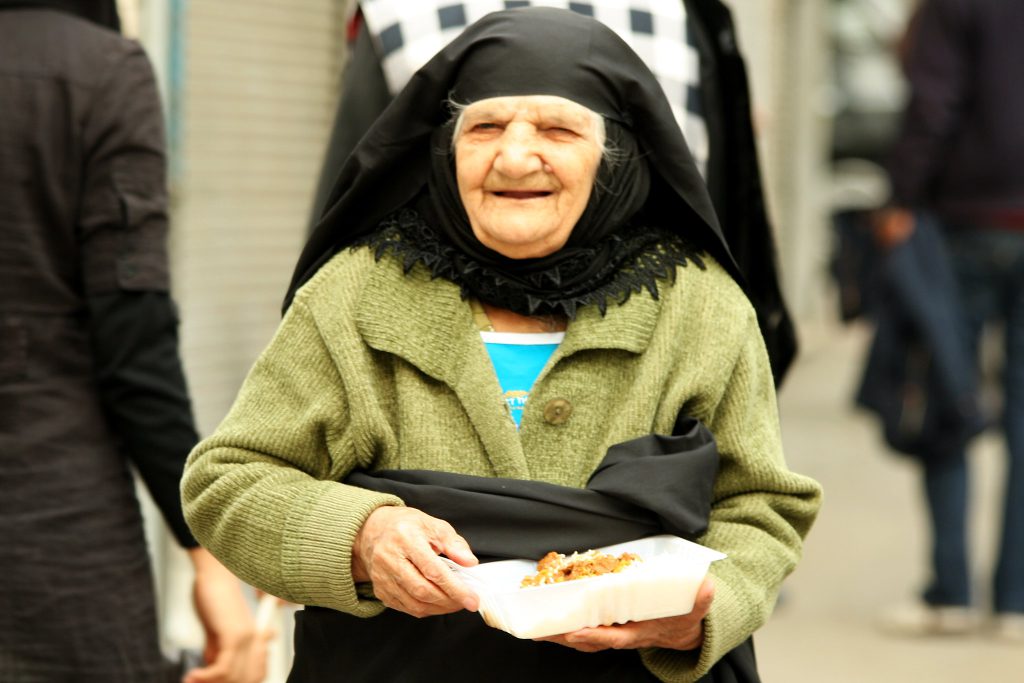
At the end of every Ashura, it is customary for some people to donate free meals, food, and drink to all people which is called Nazri in Farsi. The main purpose of Nazri is to help poor people on behalf of Imam Hussein.
Best destinations and rituals to visit in Iran during Muharram
Nakhl Gardani ceremony in Yazd
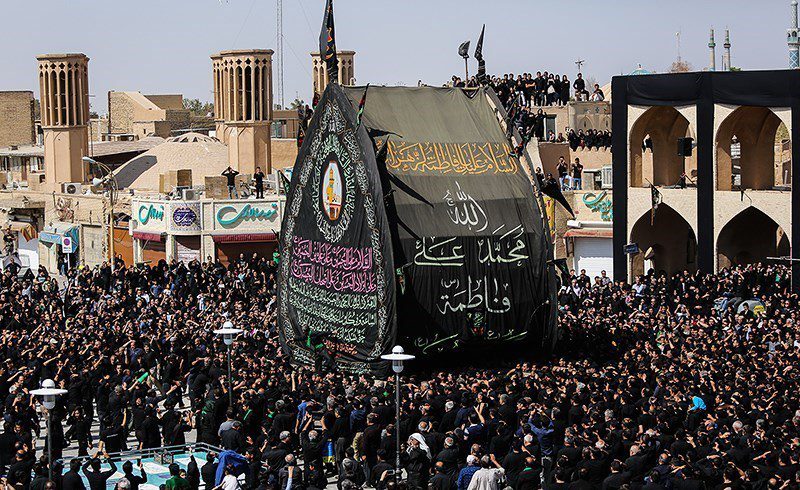
Nakhl Gardani literally means “turning palm tree’ but here it has a different meaning.
Nakhl Gardani is one of the most important and famous customs of Muharram on the days of Tasoua and Ashura in different cities, and among all the cities, Nakhl Gardani in Yazd is the most famous.
Nakhl is a very large wooden structure that is covered with mirrors and decorated with colorful shawls and cloths and it is a symbolic ritual that is generally held at noon or sunset of Ashura. Nakhl is a symbol of the burial of the holy body of Imam Hossein.
Beating one’s chest (Sine Zani) and lamentation (Noheh)
On the days of Tasoua and Ashura, crowds of people can be seen in the streets of cities and villages, and groups of men beat their chests with their hands (Sineh Zani) or metal chains (Zanjir Zani), and they all sing together a special form of music specifically designed for religious events called Noheh.
Ta’zieh in Iran
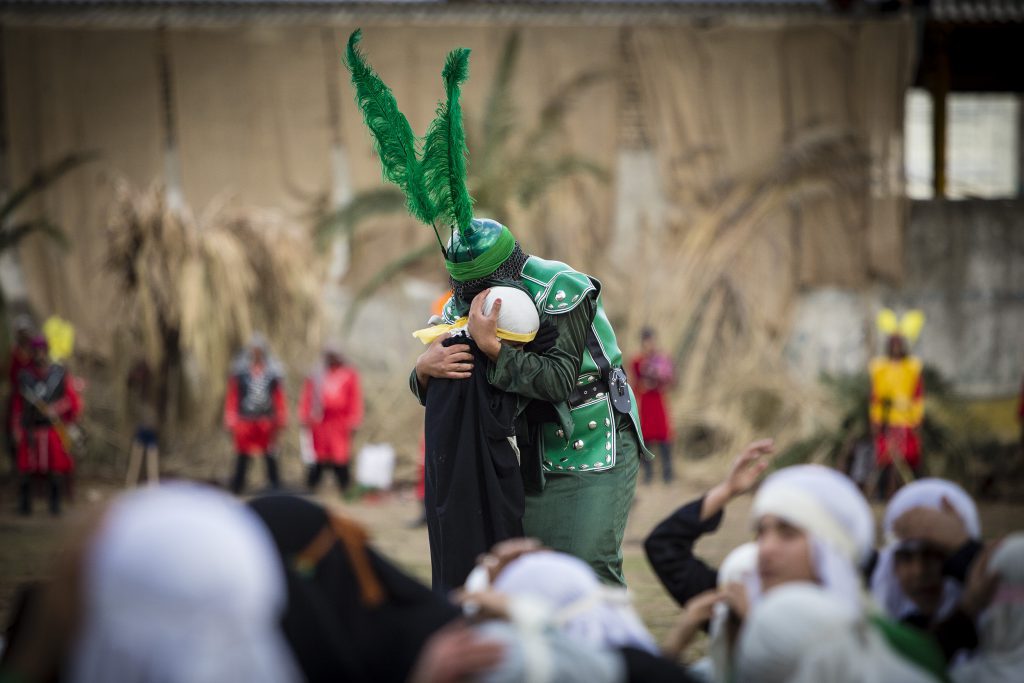
Reciting Ta’zieh (or Taziyeh or Taziyah) is one of the old performing arts of Iran. During Muharram, and especially on the days of Tasua and Ashura, in different parts of Iran, a recitation ceremony is held, which can be described as a street theater.
Actors depict the events of Tasua and Ashura days in recitation and they play the role of Imam Hussain and his companions against Yazid’s army in the battle of Karbala.
You can witness this event in many cities of Iran during the 9th and 10th of Muharram. Among all the cities of the country, Tafresh City is more famous for this recitation. Some even consider Tafresh to be the birthplace of Ta’zieh in Iran. There are many Hosseinieh (Hosseinieh is a traditional Shia Muslim gathering place for mourning and commemoration of the martyrdom of Imam Hussein) and Takiyeh in Tafarsh, which is a suitable place for holding this ritual art. In addition to Tafresh, ta’zieh-khani is performed in many cities of Isfahan province with great splendor.
Rubbing mud in Khorramabad (Gel Mali)
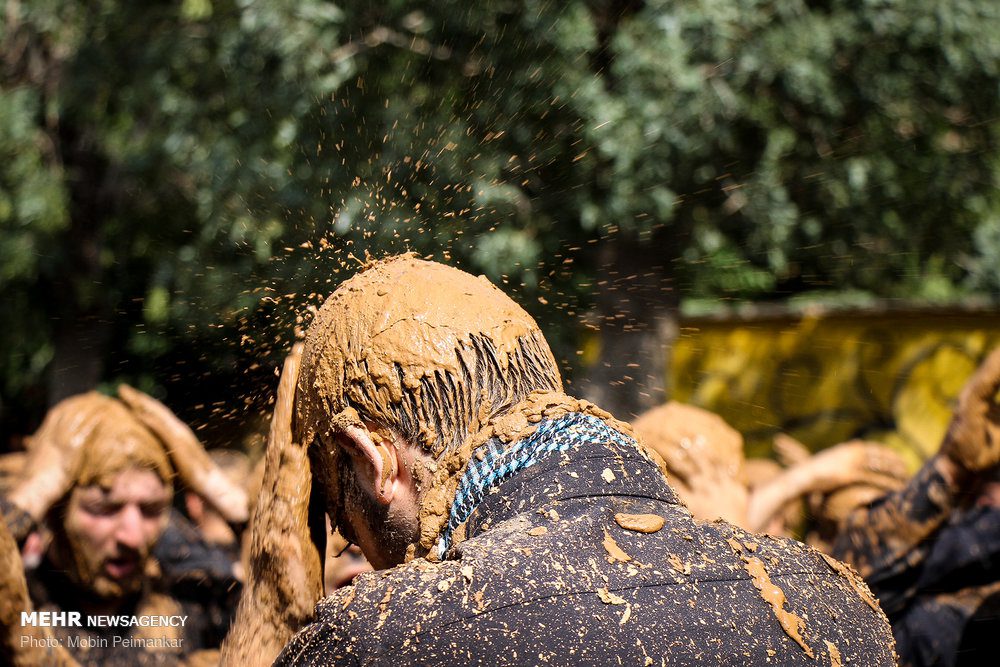
In this ceremony, the mourners are so sad that they lose themselves and pour mud and dirt on their heads, and then beat their heads and chests. This symbolic ceremony starts on the seventh day of Muharram. Men take a bath on the morning of this day and after shaving their heads and faces, and wearing clean clothes, they start their mourning.
They make Mud in the ponds around the Tekyeh and places of mourning. Then they rub the mud on themselves from head to toe. Some of the men go completely into the mud. After their feet are full of mud, they mourn by beating their chests and singing Noheh.
The main center of the establishment of Gel Mali is Khorramabad and other cities of Lorestan province. But this ceremony is held in Kermanshah and Ilam provinces as well.
Husseinieh Azam ceremony in Zanjan
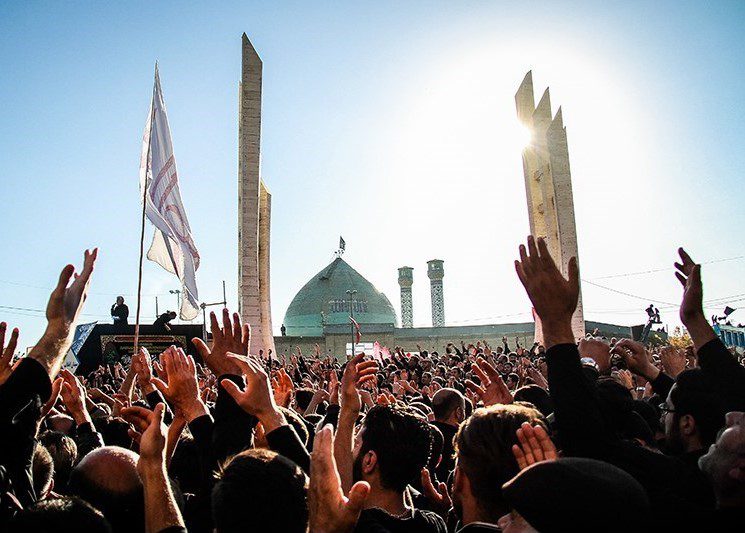
Hosseinieh Azam Zanjan is a 100-year-old Hosseinieh or Husseinieh and every year on the 8th day of Muharram known as “Yom al-Abbas” it becomes a place of great and magnificent mourning. The mourning ceremony of this Hosseinieh was registered in the spiritual heritage list of the country in 2007.
Muharram 2023 in Iran
You need to know that the Islamic calendar is different from the common Iranian calendar. Muharram is the first month of the new year of the Islamic calendar. In 2023, the month of Muharram in Iran falls in the months of Tir and Mordad which are July and August in the Christian calendar. Muharram 2023 will start on July 19th and end on August 17th. This means Ashura Day will be on July 28th.
Etiquettes to remember in traveling to Iran in Muharram
- Dress modestly: Wearing black clothing during this month is a way to show your respect to the mourners.
- Respect religious customs: During Muharram, Shia Muslims engage in various forms of mourning and commemoration. It is important to be respectful of these customs and to avoid disrupting any religious processions or rituals.
- Be courteous and polite: Iranians are known for their hospitality and politeness, and it is important to reciprocate this respect. Be courteous and polite to the people you meet, and try to learn some basic Persian phrases to show your appreciation.
- Be mindful of photography: It is generally acceptable to take photos in public places in Iran, but it is important to be mindful of photographing people without their permission, particularly during Muharram.
- Plan ahead: During Muharram, many businesses and shops may have limited hours or be closed, so it is important to plan ahead and check for any closures or schedule changes.
FAQs about Muharram
Q: What is Muharram?
A: Muharram is the first month of the Islamic calendar and the start of the new year for Arabic countries.
Q: Why is Muharram important?
A: Muharram is important to all Muslims around the world because it is one of the 4 sacred months in Islam and many significant historical events happened during this month.
Q: What is Ashura?
A: Ashura is the day Imam Hussein – the third Imam in the Shia religion – died brutally in the battle of Karbala.
Q: What happened in Muharram?
A: The Battle of Karbala: One of the most significant events associated with Muharram is the Battle of Karbala, which occurred in 680 AD. Imam Hussein and his companions were martyred in this battle.
Q: When is Muharram 2023?
A: Muharram 2023 starts on July 19th and ends on August 17th.
Q: When is Ashura 2023?
A: Ashura Day 2023 will be on July 28th.
Q: What countries held rituals in Muharram?
A: All Muslim countries value Muharram and Ashura; such as Iran, Iraq, Afghanistan, Pakistan, Bahrain, etc.
Q: What do people do during Muharram in Iran?
A: There is a vast variety of mourning in different parts of Iran, such as Gel Mali in Lorestan, Nakhl Gardani in Yazd, Chest Beating with metal chains, and Singing Noheh.
Q: What are the best destinations to visit in Muharram?
A: Tehran, Yazd, Isfahan, Zanjan, and Lorestan are the best destinations to experience the spiritual and religious ceremonies of Muharram in Iran.
Q: Is it safe to travel to Iran in Muharram?
A: Yes! It is safe to travel to Iran in Muharram, but don’t forget to follow the etiquette to have a peaceful trip with deep spiritual experiences.
Q: Are the shops and restaurants open during Muharram?
A: Bazaars, shopping malls, and stores are closed but some restaurants might be available.
Q: Are there any special dress codes in Iran during Muharram?
A: Yes. It is recommended to wear black clothes as a sign of Mourning.
Traveling to Iran in Muharram with To Iran Tour
A visit to Iran during Muharram and Ashura is an excellent opportunity to learn about its prominent religion and a chance to experience Iranian culture in a new and intimate way. Although some places may be closed during Ashura, you can still witness the mourning rituals in various cities and villages in Iran, such as the Nakhl-Gardani ceremony in Yazd or the mud rubbing ceremony in Lorestan. By participating in these rituals, you can gain insight into the values and traditions of Shia Muslims and experience the warm hospitality of the Iranian people. You can discover amazing Iran during Muharram with our exclusive deals. Let us tailor-make your Iran tour package to get the best out of your trip.

